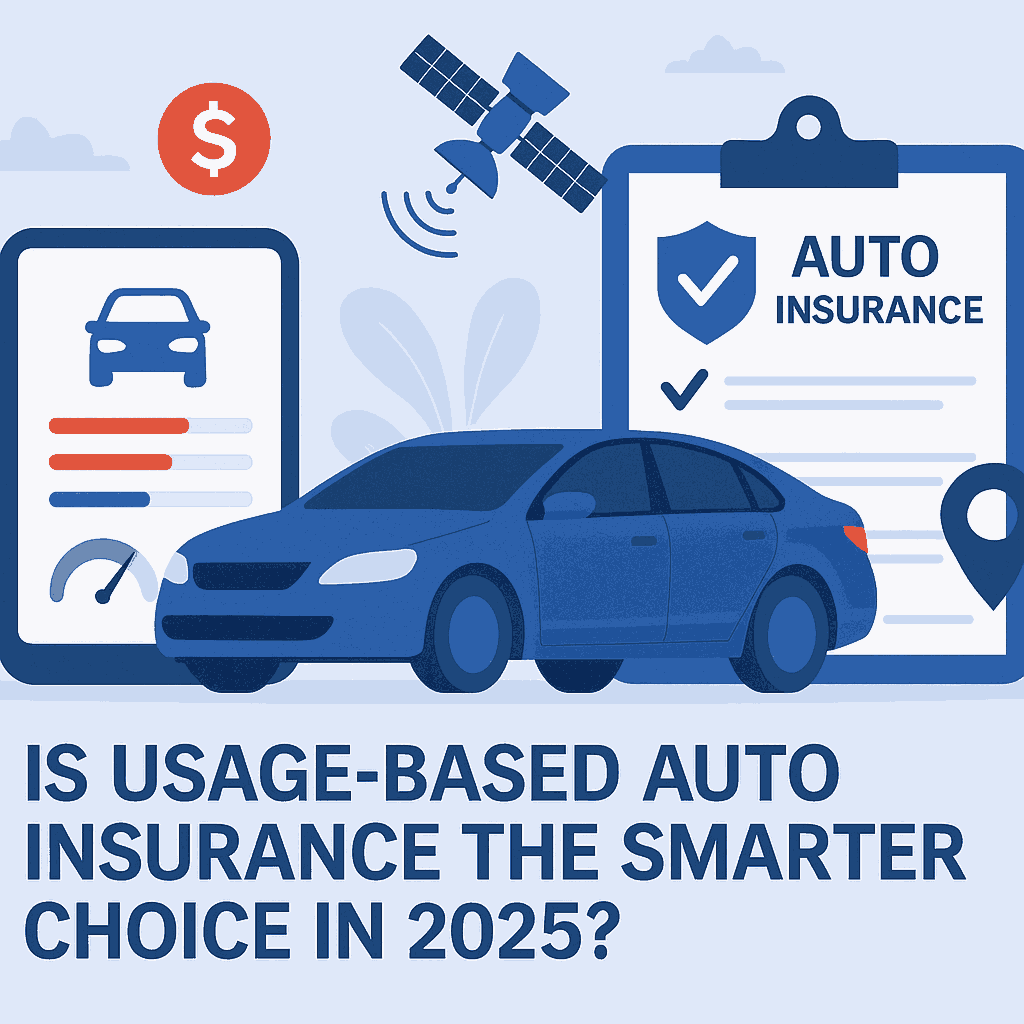Not all drivers are the same, yet traditional auto insurance has long priced policies as if they were. In 2025, that’s starting to change. More insurance providers are now basing rates on how—and how often—you drive. This model, known as usage-based insurance (UBI), is becoming a mainstream option in the U.S.
For careful drivers who log fewer miles, this shift could mean real savings. But there’s more to it than discounts. With tracking devices involved, the model brings questions about how data is collected and used. So, what exactly is UBI, and is it a better fit than the policy you’ve had for years?
Let’s break down what’s new, what’s at stake, and what it means for drivers in America this year.
What Is Usage-Based Auto Insurance?
Usage-based auto insurance isn’t just a trend—it’s a response to changing technology and consumer habits. At its core, UBI ties your insurance rate to your actual driving performance and behavior, not just your demographic profile.
Here’s how it works:
- A device is installed in your vehicle or you use a smartphone app.
- It collects real-time data: how far you drive, how fast you go, how hard you brake, and more.
- Insurers review this data and use it to adjust your premiums.
There are three common types:
- Miles-based plans: Your rate depends on the number of miles driven.
- Behavior-based plans: These monitor how safely or aggressively you drive.
- Hybrid plans: A mix of mileage and behavior monitoring.
Why Drivers Are Making the Switch
Several key shifts are pushing Americans to rethink how they insure their vehicles.
Lower Annual Mileage
Work-from-home arrangements have changed how often people commute. Fewer daily drives mean more people are asking why they’re paying full-price rates.
Personalized Pricing
Flat-rate pricing often penalizes cautious drivers. With UBI, safe habits like gradual braking and obeying speed limits may be rewarded.
In-Car Technology
Modern vehicles come with built-in systems that make it easier for insurance providers to collect driving data, removing the need for additional hardware.
Eco-Awareness
Some insurers include bonuses or points for fuel-efficient or eco-conscious driving. This aligns with the lifestyle of environmentally aware consumers.
Who Should Consider UBI?
This insurance model isn’t for everyone. But if you fall into one or more of these categories, it’s worth exploring:
- You drive fewer than 10,000 miles per year.
- You have a clean driving record.
- You’re confident in your road habits and rarely engage in risky behavior.
- You use your vehicle primarily during off-peak hours.
Young drivers, remote workers, retirees, and suburban commuters often find themselves well-suited for usage-based policies.
What Are the Benefits?
Let’s talk about what works in your favor if you opt in.
1. Fairer Pricing
If you drive safely and less often than average, you could see reductions in your insurance cost.
2. Real-Time Feedback
Some UBI programs provide performance summaries, so you can track how you’re doing and where you might need improvement.
3. Flexibility
Many insurers allow trial periods. You can opt in, review your performance, and decide whether to continue before your premium is affected.
4. Potential Perks
Some providers offer incentives like free roadside assistance or safe driving rewards.
Are There Drawbacks?
With any change comes a few trade-offs. Here are factors to weigh before jumping in.
Privacy Concerns
These programs rely on telematics—technology that tracks where and how you drive. While insurers often claim the data is secure, some consumers remain uncomfortable with ongoing location tracking.
Unpredictable Premiums
Unlike fixed-rate plans, your cost may fluctuate from month to month. A single aggressive drive might affect your score.
Limited Benefit for High-Mileage Drivers
If your job requires long commutes or road trips, usage-based pricing may not work in your favor.
Technology Reliability
App-based programs sometimes misread phone movement as driving behavior, particularly if the phone is shared among household members.
Legal and Regulatory Landscape
States regulate how auto insurers can use data. In 2025, several states have passed laws that improve transparency, requiring companies to disclose how driving data influences rates. Some states restrict how long insurers can store that information, while others limit how personal data may be shared.
Drivers are advised to read privacy policies thoroughly before agreeing to install any tracking device or use app-based telematics.
How to Compare Programs
If you’re thinking about testing out a usage-based option, ask these key questions:
- How is my data collected and used?
- What behaviors increase or reduce my rate?
- How often are premiums adjusted?
- Can I opt out if I change my mind?
- Is a trial period offered before pricing kicks in?
Market Outlook in 2025 and Beyond
Insurers aren’t just rolling this out as an option—they’re banking on it as the future of auto coverage. Experts project that by 2030, more than half of U.S. drivers may be enrolled in a usage-based policy of some kind.
What’s more, these models will likely integrate with broader platforms. Car manufacturers, GPS providers, and mobile phone services may all play a role in the data ecosystem. In fact, partnerships between automakers and insurers are already surfacing.
The industry is also investing in artificial intelligence and predictive analytics. These tools will help insurers distinguish genuine risk from isolated incidents—making pricing even more tailored.
Should You Enroll?
There’s no one-size-fits-all answer. But if your current policy doesn’t reflect how little you drive or how safely you operate your vehicle, usage-based insurance might be a way to cut unnecessary costs.
Before you decide, review your average mileage, think about your comfort level with data sharing, and run a few sample quotes from providers offering UBI.
In a world where personalization is now the norm, auto insurance is finally catching up. While not without its questions, usage-based coverage gives many U.S. drivers the opportunity to take control of their premiums, their driving behavior—and ultimately, their costs.
